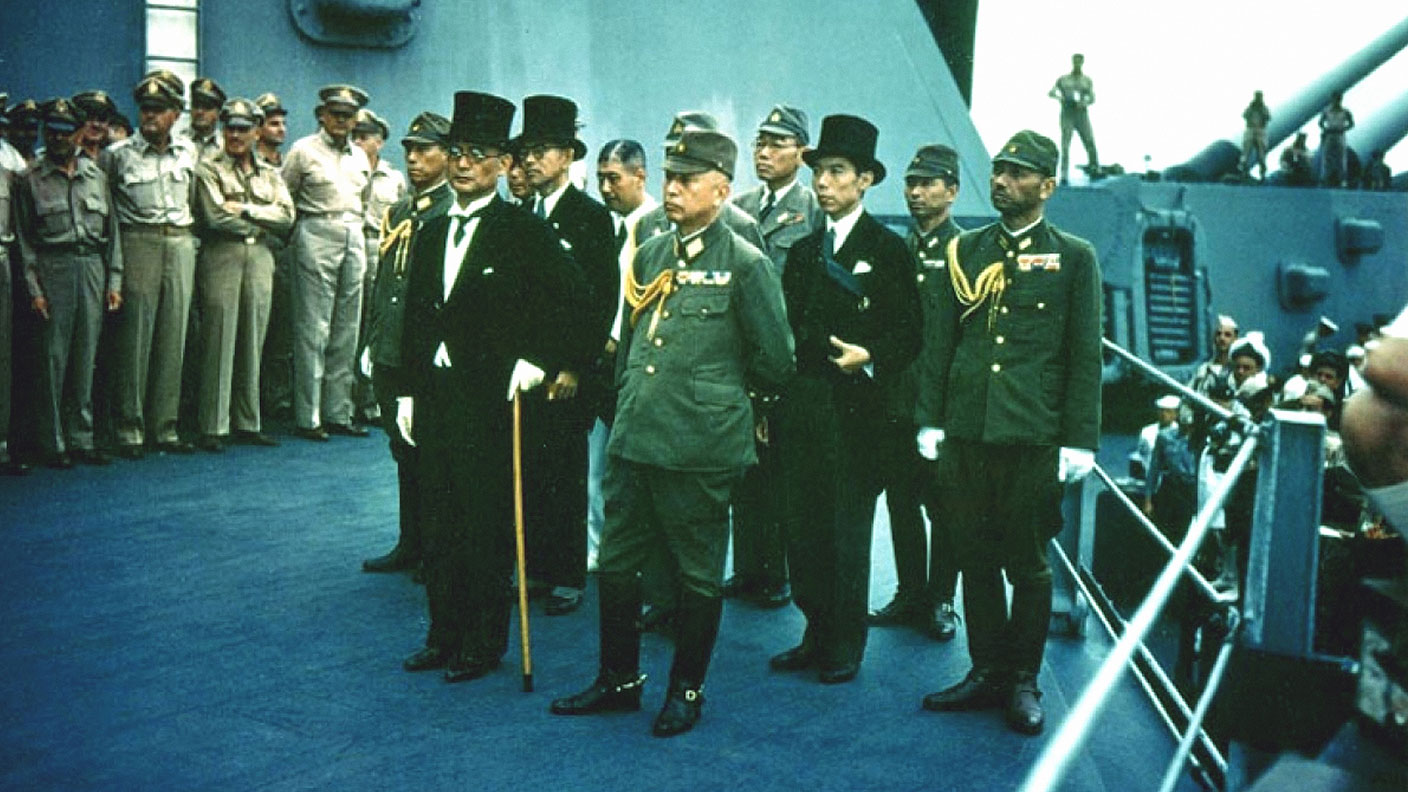2 September 1945: Japan signs its unconditional surrender
On this day in 1945 – 75 years ago – Japanese officials formally surrendered, ending the Second World War, and creating the conditions for Japan's economic miracle.

The story of the Japanese recovery after 1945 is one of the great economic tales of the 20th century. By the time of the surrender signed 75 years ago today the economy was a wreck. The “Greater East Asia Co-Prosperity Sphere” had turned into a nightmare of Japan's own making. Cities and industrial capacity had been levelled by allied bombing, both conventional and, at Nagasaki and Hiroshima, nuclear.
Industrial production was at one tenth of pre-war levels. Hyper-inflation and commodity shortages were rife. A contemporary allied report estimated that Japan had lost up to a quarter of its entire national wealth in the conflict.
As Japanese officials boarded the USS Missouri in Tokyo Bay to sign an unconditional surrender that was to put Japan under foreign occupation for the next seven years, it might have seemed that the humiliation was only just beginning.
MoneyWeek
Subscribe to MoneyWeek today and get your first six magazine issues absolutely FREE

Sign up to Money Morning
Don't miss the latest investment and personal finances news, market analysis, plus money-saving tips with our free twice-daily newsletter
Don't miss the latest investment and personal finances news, market analysis, plus money-saving tips with our free twice-daily newsletter
In fact, the US occupation proved to be not so much the end as a new beginning. The allied administrators, ever suspicious of monopolies, worked to abolish the Zaibatsu the big industrial conglomerates that had dominated the Japanese economy for decades. However, they were unable to create a world of free-wheeling liberal capitalism in its place.
A new model, the Keiretsu, based on cross-share ownership and cosy relations with government officials, sprang up to replace the old conglomerates. These groups included such famous names as Mitsubishi (which owns interests in diverse sectors, such as banking, shipping and construction, as well as cars) and Mitsui, a group which includes Sony and Toshiba.
In politics, too, a distinctively Japanese model asserted itself. Yes, Japan was democratic, but it was the sort of democracy where one big-tent party (the Liberal Democrat Party, or LDP) could remain in power for 38 years without interruption.
Out of a cataclysm, Japan was able, in a few short decades, to transform itself into the world's second-largest economy, a nation associated not with ruined cities, but with cutting-edge innovation and big-name brands. In the 1950s, Japanese GDP grew at an average rate of 9.1% per annum in the 1960s it topped 10% a year.
Get the latest financial news, insights and expert analysis from our award-winning MoneyWeek team, to help you understand what really matters when it comes to your finances.
Alex is an investment writer who has been contributing to MoneyWeek since 2015. He has been the magazine’s markets editor since 2019.
Alex has a passion for demystifying the often arcane world of finance for a general readership. While financial media tends to focus compulsively on the latest trend, the best opportunities can lie forgotten elsewhere.
He is especially interested in European equities – where his fluent French helps him to cover the continent’s largest bourse – and emerging markets, where his experience living in Beijing, and conversational Chinese, prove useful.
Hailing from Leeds, he studied Philosophy, Politics and Economics at the University of Oxford. He also holds a Master of Public Health from the University of Manchester.
-
 ‘Why I have ditched my Help to Buy ISA for cash savings and the stock market’
‘Why I have ditched my Help to Buy ISA for cash savings and the stock market’Without the 25% bonus, my Help to Buy ISA is effectively redundant, says MoneyWeek writer Sam Walker.
-
 Is your inheritance tax allowance cut if you sell to downsize or sell your home to pay for care?
Is your inheritance tax allowance cut if you sell to downsize or sell your home to pay for care?Downsizing relief is a little-known benefit that could save your loved ones tens of thousands of pounds in inheritance tax after you’ve died.
-
 13 April 1960: the first satellite navigation system is launched
13 April 1960: the first satellite navigation system is launchedFeatures On this day in 1960, Nasa sent the Transit 1B satellite into orbit to provide positioning for the US Navy’s fleet of Polaris ballistic missile submarines.
-
 9 April 1838: National Gallery opens in Trafalgar Square
9 April 1838: National Gallery opens in Trafalgar SquareFeatures On this day in 1838, William Wilkins’ new National Gallery building in Trafalgar Square opened to the public.
-
3 March 1962: British Antarctic Territory is created
Features On this day in 1962, Britain formed the British Antarctic Territory administered from the Falkland Islands.
-
10 March 2000: the dotcom bubble peaks
Features Tech mania fanned by the dawning of the internet age inflated the dotcom bubble to maximum extent, on this day in 2000.
-
9 March 1776: Adam Smith publishes 'The Wealth of Nations'
Features On this day in 1776, Adam Smith, the “father of modern economics”, published his hugely influential book The Wealth of Nations.
-
 8 March 1817: the New York Stock Exchange is formed
8 March 1817: the New York Stock Exchange is formedFeatures On this day in 1817, a group of brokers moved out of a New York coffee house to form what would become the biggest stock exchange in the world.
-
7 March 1969: Queen Elizabeth II officially opens the Victoria Line
Features On this day in 1969, Queen Elizabeth II took only her second trip on the tube to officially open the underground’s newest line – the Victoria Line.
-
4 March 1519: Hernan Cortes arrives in Mexico
Features On this day in 1519, Hernan Cortes landed in Mexico before marching on the Aztec capital, Tenochtitlan.